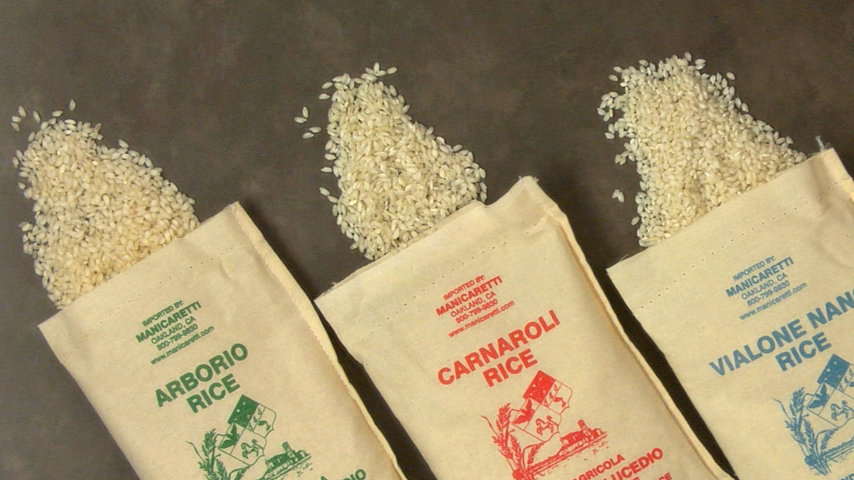Tips & Techniques > Types of Rice for Risotto

Risotto rice contains the perfect amount of starch required to create a dish that has a creamy texture and luxurious sauce. The type of rice for making risotto is vital because the creaminess comes from slowly coaxing the starch out of the rice as it is cooked and stirred. Brown risotto rice, which contains the hull and/or germ will contain more fiber and nutrients; however, it won’t be as nearly as creamy as risotto made with white rice.
Italy produces many varieties of rice which are ideal for making risotto. The highest Italian risotto rice grade is superfino, followed by fino, semi-fino, and commune. Three common types of superfino rice are Arborio, Carnaroli, and Vialone Nano. These differ in length and vary slightly in starch content and texture. Usually chefs have a particular preference, so it is important to experiment yourself to see which type you like best.
Arborio is the most popular short-grain rice for making risotto. It is capable of absorbing large amounts of liquid and produces a relatively creamy risotto with a hearty texture.
Carnaroli is a plumper, larger grain of rice that has a high starch content. It is preferred by many chefs as it produces a very creamy risotto with a nice bite.
Vialone Nano is thick and stubby in comparison to other types of superfino rice. It absorbs liquid well and is commonly used for soupy-style risottos, especially those with added seafood. Vialone Nano is the rice of choice in the Veneto region of Northern Italy.
Baldo rice is less known. These grains maintain their texture during cooking and have a rich flavor. Baldo rice is grown in the Piedmonte in Italy.